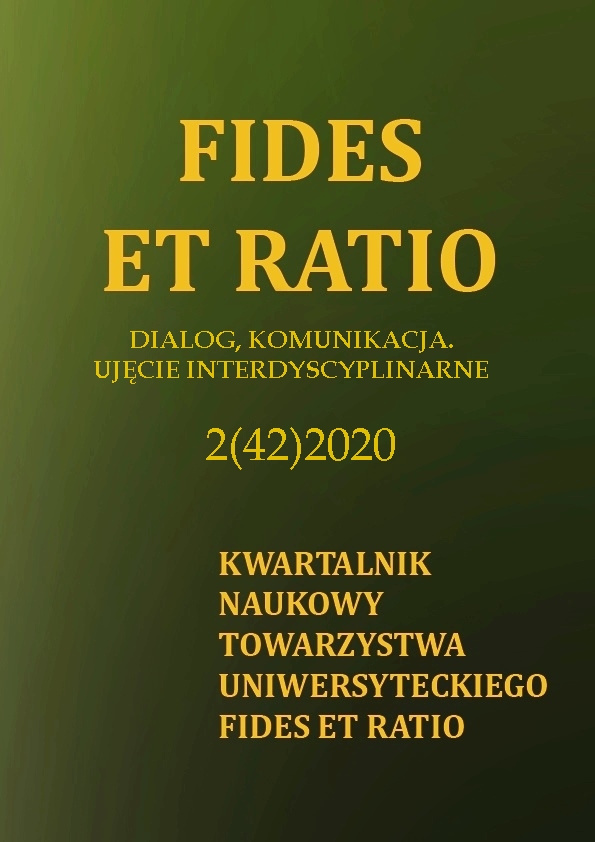Abstract
An issue that has recently attracted increasing interest from researchers and practitioners is coparenting. In Poland, this phenomenon has been investigated to a small extent. Coparenting, which begins between parents immediately after the birth of their first child, refers to the way in which the mother and father cooperate with each other in taking care of and bringing up their offspring. The birth of a child changes the nature of the relationship between the couple by confronting them with many new and often unpredicted challenges. Taking on these challenges, the parents may either adopt an attitude of cooperation, supporting and strengthening each other in their roles, or compete, criticizing each other and belittling the importance of each other’s tasks. An important aspect of coparenting is the manner of communicating. This factor plays an important role in the functioning of the family system at every stage of its life cycle. Research into the phenomenon of coparenting can provide knowledge that is necessary to develop prevention and intervention programs aimed at improving the functioning of the family.
References
Allen, S.M., & Hawkins, A.J. (1999). Maternal gatekeeping: Mothers’ beliefs and behaviors that inhibit greater father involvement in family work, Journal of Marriage and the Family, 61, 199–212, doi: 10.1037/a0031259.
Belsky, J., Woodworth, S., Crnic, K. (1996). Trouble in the second year: Three questions about family interaction, Child Development, 67, 556–578, doi: 10.2307/1131832.
Belsky, J., Crnic, K., Gable, S. (1995). The determinants of coparenting in families with toddler boys: Spousal differences and daily hassles, Child Development, 66, 629–642, doi: 10.1111/j.1467-8624.1995.tb00894.x.
Christopher, C., Umemura, T., Mann, T., Jacobvitz, D., Hazen, N. (2015). Marital Quality over the Transition to Parenthood as a Predictor of Coparenting, Journal of Child and Family Studies, 24 (12), 3636–3651, doi: 10.1007/s10826-015-0172-0.
Cook, J.C., Schoppe-Sullivan, S.C., Buckley, C.K., Davis, E.F. (2009). Are Some Children Harder to Coparent than Others? Children's Negative Emotionality and Coparenting Relationship Quality, Journal of Family Psychology, 23 (4), 606–610, doi: 10.1037/a0015992
Cowan, C.P., Cowan, P.A. (1988). Who does what when partners become parents: Implications for men, women, and marriage, Marriage and Family Review., 12, 105-131, doi: 10.1300/j002v12n03_07.
Cox, M. J., Paley, B. (1997). Families as systems, Annual Review of Psychology, 48, 243-267.
Davis, E.F., Schoppe-Sullivan, S.J., Mangelsdorf, S.C., Brown, G.L. (2009) The Role of Infant Temperament in Stability and Change in Coparenting Across the First Year of Life, Parenting: Science And Practice, 9, 143–159, doi: 10.1080/15295190802656836
Deutsch, F.M. (1999). Halving it all: How equally shared parenting works. Cambridge,
MA: Harvard University Press.
Doherty, W.J., Beaton, J.A. (2004). Mothers and fathers parenting together, (in:)
A.L. Vangelisti (ed.), Handbook of family communication, 269-286, Mahwah, New Jersey, London: Lawrence Erlbaum Associates.
Encyklopedia Katolicka, (2006). Macierzyństwo, Tom XI, s. 730-731, Lublin. TN KUL.
Encyklopedia Katolicka, (2010). Ojcostwo, Tom XIV, s. 438, Lublin. TN KUL.
Feinberg, M., Brown, LD., Kan, ML. (2012). A Multi-Domain Self-Report Measure of Coparenting, Parenting, Science and Practice, 12 (1), 1–21.
Feinberg, M. E. (2002). Coparenting and the Transition to Parenthood: A Framework for Prevention, Clinical Child and Family Psychology Review, 5 (3), 173–195.
Feinberg, M., Kan, M.L. (2008). Establishing Family Foundations: Intervention Effects on
Coparenting, Parent/Infant Well-Being, and Parent–Child Relations, Journal of Family Psychoogy, 22 (2), 253–263.
Feinberg, M., Kan, M.L., Hetherington, E.M. (2007) Longitudinal study of coparenting conflict on adolescent maladjustment, Journal of Marriage and Family, 69, 687–702.
Gable, S., Crnic, K., & Belsky, J. (1994). Coparenting within the family system: Influences on children’s development, Family Relations: An Interdisciplinary Journal of Applied Family Studies, 43, 380-386, doi: 10.2307/585368.
Jouriles, E.N., Murphy, C.M., Farris, A.M. (1991). Marital adjustment, parental disagreements about child rearing, and behavior problems in boys: Increasing the specificity of the marital assessment, Child Development, 62, 1424–1433, doi: 10.2307/1130816.
Lewis, J.M., Owen, M.T., & Cox, M.J. (1988). The transition to parenthood: III. Incorporation of the child into the family, Family Process, 27, 411–421, doi: 10.1111/j.1545-5300.1988.00411.x.
Lindsey, EW., Caldera, Y., Colwell M. (2005). Correlates of Coparenting During Infancy, Family Relations, 54, 346–359.
McHale, J.P., Kuersten-Hogan, R., Rao, N. (2004). Growing Points for Coparenting Theory and Research, Journal of Adult Development, 11 (3), 221–234, doi: 10.1023/b:jade.0000035629.29960.ed.
McHale, J.P. (1995). Coparenting and triadic interactions during infancy: The roles of marital distress and child gender, Developmental Psychology, 31, 985–996, doi: 10.1037/0012-1649.31.6.985.
McHale, J.P. (1997). Overt and covert coparenting processes in the family, Family Process, 36, 183– 201, doi: 10.1111/j.1545-5300.1997.00183.x
McHale, J.P. (2007). When infants grow up in multi-person relationship systems, Infant Mental Health Journal, 28(4), 370–392.
Minuchin, S. (1974). Families and family therapy, Cambridge: Harvard University Press.
Owen, M.T., Cox, M. (1997). Marital conflict and the development of infant–parent attachment relationships, Journal of Family Psychology, 11, 152–164.
Palkovitz, R., Fagan, J., Hull, J. (2014). Coparenting and children’s well-being, (in:)
N.J. Cabrer, C.S. Tamis-LeMonda (eds.), Handbook of Father Involvement: Multidisciplinary Perspectives, 202-219, New York: Routledge.
Patterson, C.J., Sutfin, E.L., Fulcher, M. (2004). Division of Labor Among Lesbian and Heterosexual Parenting Couples: Correlates of Specialized Versus Shared Patterns, Journal of Adult Development, 11 (3), 179–189, doi: 10.1023/b:jade.0000035626.90331.47.
Pinsof, W.M. (1992). Toward a Scientific Paradigm for Family Psychology: The Integrative Process Systems Perspective, Journal of Family Psychology, 5 (3–4), 432-447, doi: 10.1037/0893-3200.5.3-4.432.
Satir ,V. (1972). Peoplemaking, Palo Alto, CA: Science and Behavior Books.
Satir, V. (1988). The New Peoplemaking, Mountain View, CA: Science and Behavior Books.
Schoppe, S.J., Mangelsdorf, S.C., Frosch, C.A. (2001). Coparenting, family process, and family structure: Implications for preschoolers’ externalizing behavior problems, Journal of Family Psychology, 15, 526–545, doi: 10.1037/0893-3200.15.3.526.
Schoppe-Sullivan, S.J., Cannon, E.A., Brown, G.L., Mangelsdorf, S.C., Szewczyk-Sokołowski, M. (2008). Maternal Gatekeeping, Coparenting Quality, and Fathering Behavior in Families With Infants, Journal of Family Psychology, 22 (3), 389-398, doi: 10.1037/0893-3200.22.3.389.
Terry, D.J., McHugh, T.A., Noller, P. (1991). Role dissatisfaction and the decline in marital quality across the transition to parenthood, Australian Journal of Psychology, 43, 129–132, doi: 10.1080/00049539108260136.
Van Egeren, L.A. (2004). The development of the coparenting relationship over the transition to parenthood, Infant Mental Health Journal, 25 (5), 453–477, doi: 10.1002/imhj/20019.
